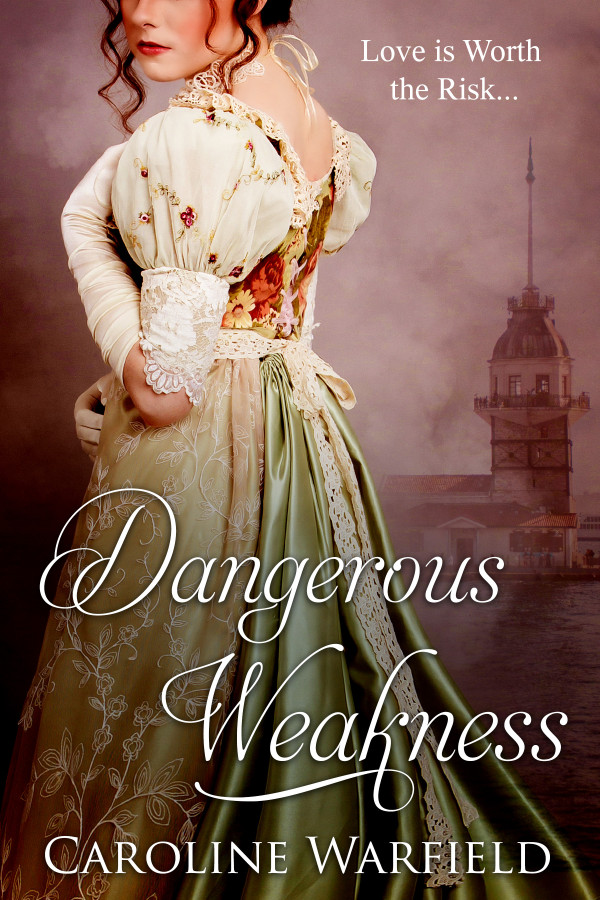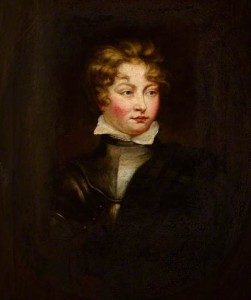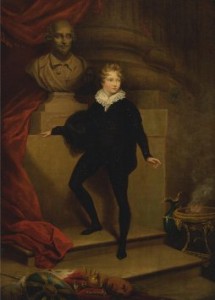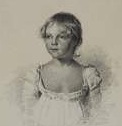Cynthia, you are Caroline Warfield’s winner! You have won a copy of Dangerous Works or Dangerous Secrets. We will be in touch.
Thanks to Caroline and to everyone who shared the post on social media and/or commented.
Cynthia, you are Caroline Warfield’s winner! You have won a copy of Dangerous Works or Dangerous Secrets. We will be in touch.
Thanks to Caroline and to everyone who shared the post on social media and/or commented.
If you have visited my Web site you’ve seen that tag line. But, what’s the greatest risk?
Risk can refer to physical risk. Romantic suspense thrives on it. Common Regency tropes associated with physical jeopardy include kidnapped heroines, pirate capture, War (Peninsula or Waterloo usually), or basic assassination attempts by villainous characters. We all love heroes—and sometimes heroines—who face up to these challenges and come out winners, especially the ones that get a little beaten up in the process.
Risk can refer to social risk. The regency subgenre was built on dangers to women in particular if they challenged societal expectations or broke social mores. Common tropes of this kind include the young girl led astray to trap her into marriage, the family hounded from London in disgrace, the deb tricked into disgrace by a vicious rival, and, one of my favorites, the older woman in a small town with A Scandalous Past. The risk to the men? Always—shudder—the parson’s mousetrap. We all love the heroines who take a chance by thumbing their nose at convention and get away with it.
The greatest risks of all, however, are the dangers to the human heart, the most vulnerable of organs. Heroes and heroines might take physical and social risks, but still guard their souls and emotions closely. The ones who find it difficult to trust their hearts to another make for the most satisfying reading.
 Dangerous Weakness, my newest work, abounds in all three, but the hero and heroine see them differently.
Dangerous Weakness, my newest work, abounds in all three, but the hero and heroine see them differently.
Lily Thornton, the heroine, is an intrepid young lady. As the daughter of a diplomat she has grown up in the great cities of Europe, speaks six languages, and socializes with gentlemen of all ranks and ethnicities. She is confident and independent. At one point in the story she even finds employment as a teacher in the Sultan’s Seraglio. The girl has spunk. She fears little, at least she didn’t until she made a colossal blunder in Saint Petersburg and almost succumbed to the charms of a weasel, one that follows her back to England.
When Lily finds herself thrown in with the hero, who is investigating her tormenter, and she succumbs to his lovemaking too quickly, she pulls back in panic. She can’t possibly trust him, especially since she knows he has no intention of marrying beneath him. When he subjects her to an insulting marriage proposal, she refuses to accept him. She will not trust her heart to a man who will step on it, hide her away in the country, and push her aside as an embarrassment. She would rather make her own way as a single mother. The risk to her heart is greater than social disgrace.
Richard Hayden, the Marquess of Glenaire has no fears. He manages his life in an orderly manner, at least until he meets Lily. His never puts a foot out of line socially, at least until he meets Lily. He plans a secure future with a socially correct and perfectly safe wife who will leave him to his work and be a proper duchess when he inherits. He knows the dangers the wide world presents because he works night and day to keep England and its interests safe. Therefore, he knows better than anyone what kind of danger Lily puts herself in when she disappears from London in the direction of the Mediterranean.
Richard doesn’t hesitate for a second—he sets out after the fool woman who has led him a merry dance, thrown proposals back in his face, and refuses to behave, as she ought. The Pirates that take them may be dangerous, but he manages them fearlessly. It is more terrifying for him to admit to Lily that he loves her. He doesn’t want a duchess, he wants a wife to love and protect. What if she says no again?
Love is worth all those risks, but especially that of opening your hearts, as Lily and Richard finally find the courage to do.
Have you ever taken a bit chance on a relationship? How did it work out? I will give one person who comments (randomly selected) a Kindle copy of either Dangerous Works or Dangerous Secrets.
Those were the words, spoken in deep awe, by surgeon Joseph Carpue when viewing the results of his first nose reconstruction, performed on this day in 1814. Plastic surgery was born.
Warning, heavy ick factor lies ahead.
His surgery is thought to be the first plastic surgery in the west but it was based on a procedure for nose reconstruction in India published in a book twenty years before. Nose reconstructions had been performed in India since 1500 BC. Carpue published an account of his procedures in a book snappily entitled An Account of Two Successful Operations for Restoring a Lost Nose from the Integument of the Forehead.
Why nose reconstruction? Accidents could happen. The sixteenth-century astronomer Tycho Brahe lost part of his nose in a duel and wore a brass facsimile and he also had gold and silver models for special occasions. But generally, people lost their noses through syphilis (well, I did warn you…) , or to be more specific, from the mercury that was the only treatment for the disease at this time. So you might have to wear something like this number from the mid-nineteenth century:
This is a silver nose painted to match the owner’s skin color. Astonishingly, the owner of this fake nose remarried and sold the device back to her physician for three pounds, claiming her new husband preferred her without it. Hmm. True love.
And apparently there were a lot of people around without noses (and with syphilis), so much so that later in the century No Nose Clubs were formed.
The Star reported in a February 1874 article entitled “The Origins of the No Nose Club”:
Miss Sanborn tells us that an eccentric gentleman, having taken a fancy to seeing a large party of noseless persons, invited every one thus afflicted, whom he met in the streets, to dine on a certain day at a tavern, where he formed them into a brotherhood … This club met every month for a whole joyous year, when its founder died, and the flat-faced community were unhappily dissolved.
I think the only question I can have after this, is what is the strangest club you have ever belonged to and what were its activities?
Let’s face it, there are a lot of icky things about the Regency (dukes, for instance) as well as the things we love (well, dukes, I guess). But one of the stranger and ickier things I came across recently was the mercifully short-lived craze for child actors in the early nineteenth century: child actors in the sense of children playing major roles in a cast of adults.
For a short time, the London theater scene was dominated by child actors. Charles Dibdin offered an acting school for children at the Royal Circus, and Henry Francis Greville at the San Souci offered regular evenings of child players.
 Possibly the most famous child actor was Master Betty (William Henry Best Betty, 1791-1874), the son of a once wealthy Anglo-Irish family. Mr. Betty Sr. discovered a goldmine in his stage struck son, who determined to be an actor after seeing Mrs. Siddons perform when he was eleven. Master Betty became a sensation, playing such roles as Hamlet (below) and Macbeth. His father joined forces with an unscrupulous manager, and one of their most popular money-makers was to charge gentlemen (in the widest sense of the word) to visit Master Betty in his dressing room.
Possibly the most famous child actor was Master Betty (William Henry Best Betty, 1791-1874), the son of a once wealthy Anglo-Irish family. Mr. Betty Sr. discovered a goldmine in his stage struck son, who determined to be an actor after seeing Mrs. Siddons perform when he was eleven. Master Betty became a sensation, playing such roles as Hamlet (below) and Macbeth. His father joined forces with an unscrupulous manager, and one of their most popular money-makers was to charge gentlemen (in the widest sense of the word) to visit Master Betty in his dressing room.
 Master Betty made his Covent Garden debut in 1804, following appearances in Ireland and Scotland and a bidding war between that theater and Drury Lane. A detachment of guards was hired to keep order in the house. For two years he hobnobbed with the great and powerful, and his career eclipsed those of Kemble and Siddons. But in 1806 he was hissed off the stage playing Richard III–and coincidentally when he hit puberty. He had made enough money to restore his family’s fortune, and entered Cambridge in 1808. But the life of a country gentleman was not enough–he made several unsuccessful attempts to revive his acting career, and in 1835 tried to start his fifteen-year-old son on an acting career.
Master Betty made his Covent Garden debut in 1804, following appearances in Ireland and Scotland and a bidding war between that theater and Drury Lane. A detachment of guards was hired to keep order in the house. For two years he hobnobbed with the great and powerful, and his career eclipsed those of Kemble and Siddons. But in 1806 he was hissed off the stage playing Richard III–and coincidentally when he hit puberty. He had made enough money to restore his family’s fortune, and entered Cambridge in 1808. But the life of a country gentleman was not enough–he made several unsuccessful attempts to revive his acting career, and in 1835 tried to start his fifteen-year-old son on an acting career.
 Another reason for his downfall was the emergence of a rival, Miss Mudie. Dickens, who almost certainly met Master Betty, gave this description of a child actress in Nicholas Nickleby. The daughter of Vincent Crummle is supposedly ten years old and “the idol of every place we go into.”
Another reason for his downfall was the emergence of a rival, Miss Mudie. Dickens, who almost certainly met Master Betty, gave this description of a child actress in Nicholas Nickleby. The daughter of Vincent Crummle is supposedly ten years old and “the idol of every place we go into.”
The infant phenomenon, though of short stature, had a comparatively aged countenance, and had moreover been precisely the same age…for five good years. But she had been kept up late every night, and put upon an unlimited allowance of gin-and-water from infancy, to prevent her growing tall.
In a rare show of good taste, the audience was revolted by Miss Mudie’s role as the heroine of The Country Girl, an adaptation of William Wycherley’s The Country Wife. If you’re not familiar with the play, it’s about a naive woman, married to an older man, who brings her to swinging Restoration London. There she meets up with a rake, whose last name is Horner, nudge nudge, who’s currently passing himself off as a eunuch so that husbands will be blissfully ignorant of his designs on their wives. And so on. Miss Mudie was eight years old and so small for her age that the actor playing her lover had to go on his knees to embrace her.
During the ensuing uproar, Miss Mudie, who had chutzpah if not acting talent, announced from the stage, “Ladies and gentlemen, I have done nothing to offend you; and as for those who are sent here to hiss me, I will be much obliged to you to turn them out.”
Actor-manager John Philip Kemble came on to beg that Miss Mudie be allowed to continue. As a witness observed, “All was noise and confusion … the curtain fell upon the most imperfect performance ever before witnessed on a London stage.”
Now here’s a plot bunny going begging. Child star falls out of fashion, what is he/she going to do for the next, uh, seven decades? Or, an impoverished parent of a child prodigy–what’s the ethical thing to do (still a relevant question today, sadly).
Oh, and if you’re in the Washington DC, area please visit Riversdale House Museum this Sunday where we’re having an author event, and I’ll be reading/signing some of my allegedly PG-rated books. Info here.
